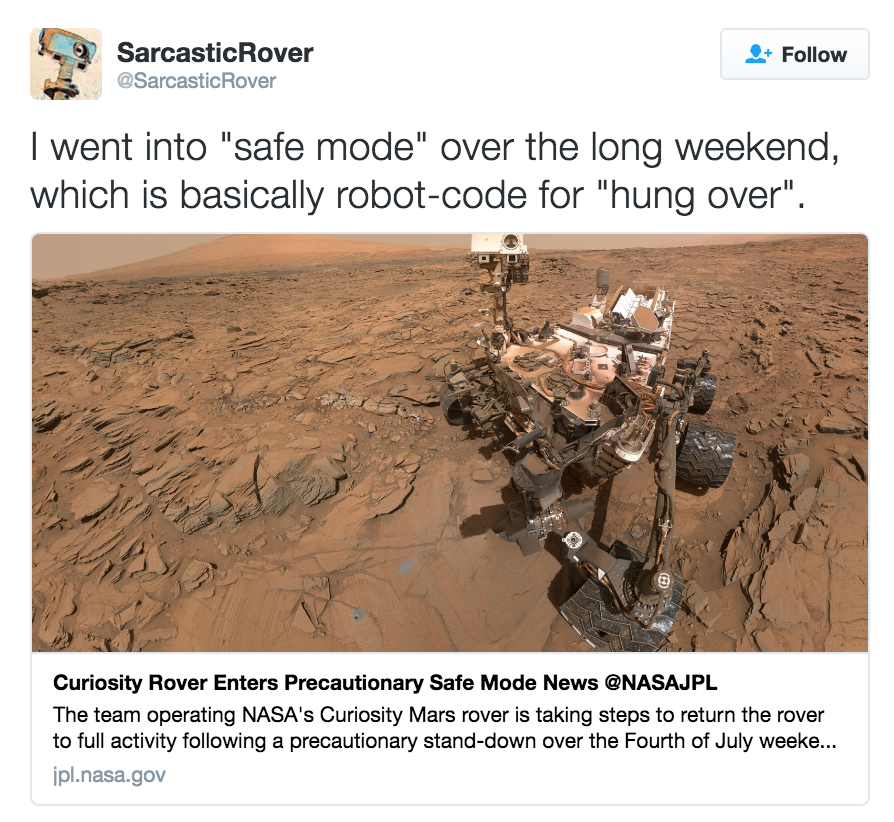NASA's Curiosity rover unexpectedly put itself into a precautionary safe mode over the weekend, and is currently at a stand-still on the surface of Mars.
Engineers still aren't sure what happened to make the rover power down, but early investigations suggest there might have been some kind of glitch between the camera and data processing software.
The good news is that Curiosity is stable for the time being, and is communicating with ground controllers. But in order to get it up and running again, the NASA Jet Propulsion Laboratory (JPL) team first need to figure out what went wrong.
"The rover put itself into safe mode on July 2, ceasing most activities other than keeping itself healthy and following a prescribed sequence for resuming communications," the JPL team wrote in a press release.
"Preliminary information indicates an unexpected mismatch between camera software and data-processing software in the main computer."
We'll probably know more in the next few days as the data comes in, but for now we just have to wait patiently while our favourite sarcastic rover looks after itself.
As scary as it is to have human technology more than 46.8 million kilometres away start unexpectedly glitching, it's not the first time this has happened. In 2013, Curiosity went into safe mode three times due to software errors, and each time NASA was able to fully restore it.
Earlier this year, the Kepler space telescope, which was floating through space more than 120 million kilometres away went into emergency mode - for reasons scientists still aren't sure of - and NASA successfully put it back online and had it hunting for exoplanets again within a few days.
So we shouldn't be too worried about Curiosity just yet, it's in good hands for now. And NASA still has big plans in store for it.
The rover has already helped us detect methane spikes on Mars's surface, and, just last week, NASA extended the mission for an additional two years, which means Curiosity will be doing science through 2018, as long as it stays healthy.
Its next job is to check out a potential site of running water nearby - an area with dark streaks that appear and disappear seasonally, known as recurring slope lineae. Last year, NASA confirmed that these were signs of running water.
Unfortunately, Curiosity isn't allowed to actually sampling any water, due to the risk of contaminating it with gross Earth germs, but it'll be able to take high resolution imagery, which could provide scientists with invaluable insight.
The ultimate goal is for the rover to climb more of Mount Sharp, to help researchers understand what happened to shift Mars from a once green, lush planet, into the arid wasteland we see today.
Fingers crossed we have more information on what's bother Curiosity soon, and that it's back up and science-ing in no time. We've got your back, little guy!
In the meantime, Sarcastic Rover over on Twitter has a pretty likely theory…

